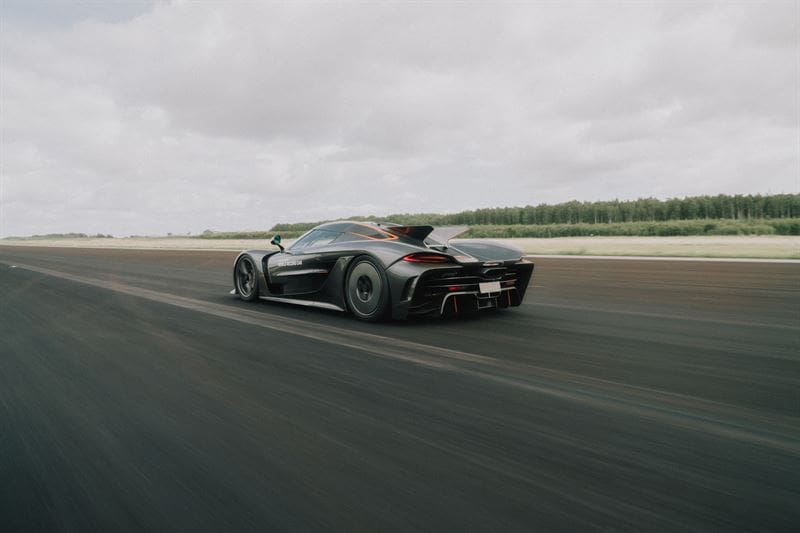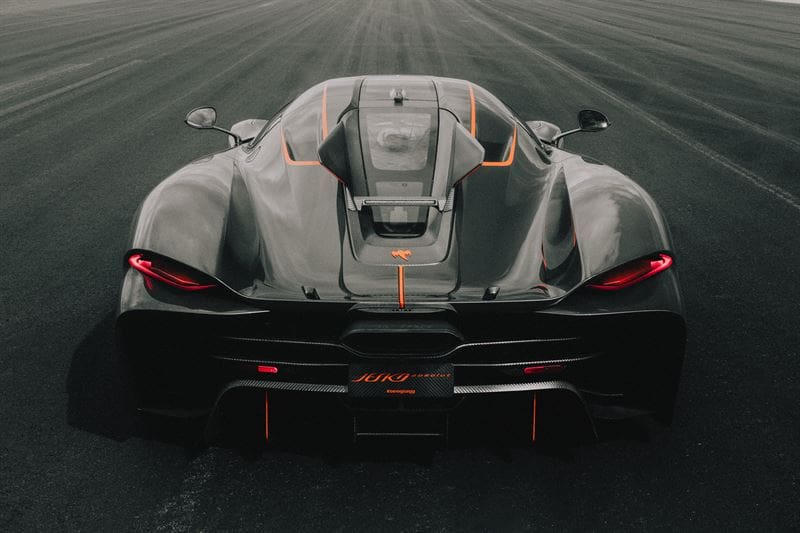What happened
Koenigsegg has retaken the 0–400–0 km/h world record with the Jesko Absolut, stopping the clock at 25.21 seconds at Örebro airfield on August 7, 2025. Factory driver Markus Lundh fought a patchy surface after rain, yet the car still went from a standstill to 400 km/h and back to zero in less time than it takes to read this paragraph. The numbers are verified by Racelogic and they matter. Zero to 400 in 16.77 seconds, 400 to zero in 8.44. Koenigsegg also posted 25.67 seconds for 0–250–0 mph. That trims more than 2.5 seconds off the same car’s 2024 mark, which in this realm is a lifetime.

Design
The Jesko Absolut is the sleek one in the Jesko family, a long-tailed, clean-bodied bullet that prioritizes low drag over track-day downforce. The stance is shark-like, all intent and purpose. Details are Koenigsegg-familiar yet still theatrical, from the dihedral doors to the neat aero finishing around the tail. Form follows speed here. There is nothing decorative that does not pay rent at 400 km/h.

Inside
Koenigsegg cabins mix lab and lounge. The structure is carbon, the switchgear feels machined rather than molded, and the driving position is pure instrument. You sit low, look out through a surprisingly airy glasshouse, and face crisp digital dials. It is not plush in the traditional luxury sense, but it is exquisitely made and calming, which helps when your horizon compresses at sixteen point something seconds to 400.
Performance
The headline is software as much as hardware. The Jesko Absolut runs a twin-turbo 5.0-liter V8 that can deliver up to 1600 hp on E85, and it sends everything to the rear axle through Koenigsegg’s Light Speed Transmission. That is the old news. The new story is a suite of control strategies the company nicknames Absolut Overdrive. Torque management, engine and transmission logic, and traction control now talk to each other with sharper timing. The result is ruthless traction on less-than-perfect tarmac and a more assertive surge through the middle of the run, followed by braking that arrives with race-car conviction and uncanny stability.
The figures read simple, the experience does not. To 400, the car climbs through gears with a crisp, unlagged shove that is more turbine than turbo. Braking is the other half of the art. Carbon-ceramics bite hard without the drama, the aero stays tidy, and the chassis tracks straight. No wiggle, no flare of ABS panic, just forward, then stopped, like someone clipped the film.

Context
In a world obsessed with instant electric torque and all-wheel-drive trickery, this is a combustion outlier. Rear-drive only, yet it has just beaten the best of the battery brigade at the most brutal combined test of pace and poise. It also speaks to how hypercars are evolving. The big leaps now come from code as much as cams. Koenigsegg will roll these software gains to customer Jesko Absoluts, which turns a record run into a real product update, not a one-off stunt.
There are quirks. The Absolut’s single-minded focus on top speed means the look is pared and purposeful rather than flamboyant. Some will miss the track-spec wing of its Jesko sibling. Others will delight in the clean silhouette and the way it slices air rather than bullying it.
Verdict
Speed is easy to shout about and dull to read. The Jesko Absolut avoids that trap. It is not fast in the abstract. It is fast with control, credible timing, and a distinct personality. Rear-drive, combustion, and a brain full of clever code. Twenty-five point two one seconds from start to stop is not just a party trick. It is a statement that the analog thrill still belongs in a digital age, and that the most interesting luxury today is excellence that owners can actually feel.
Read more about motors here.